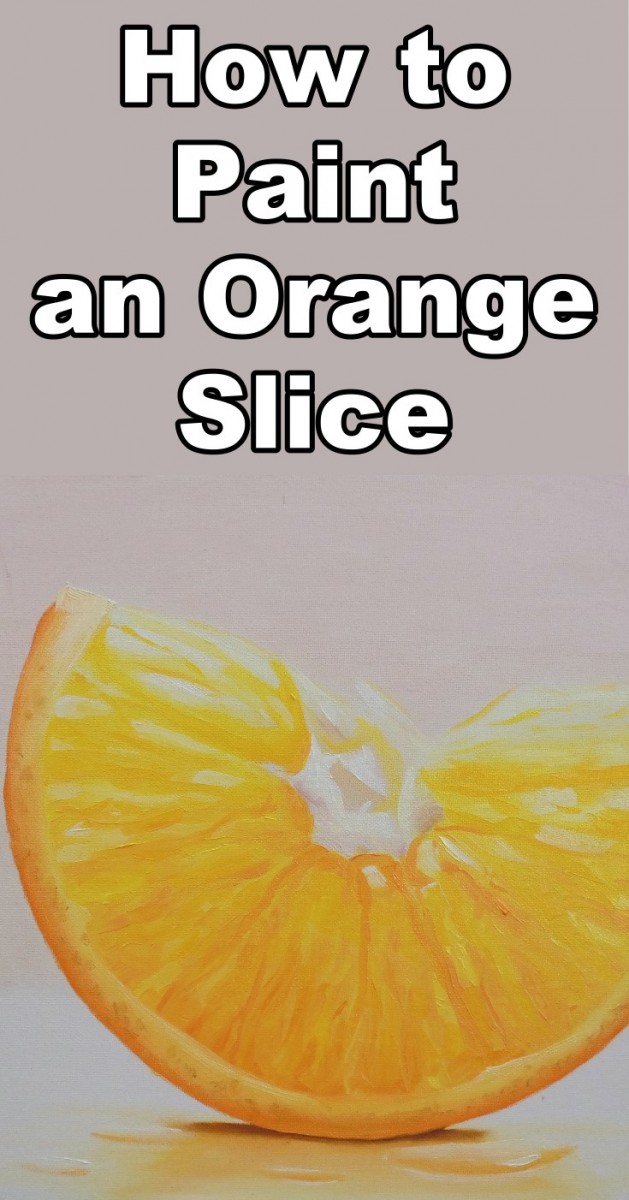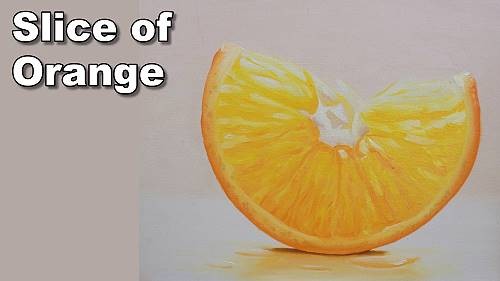Short Class Video
Class Tutorial
Paint the background
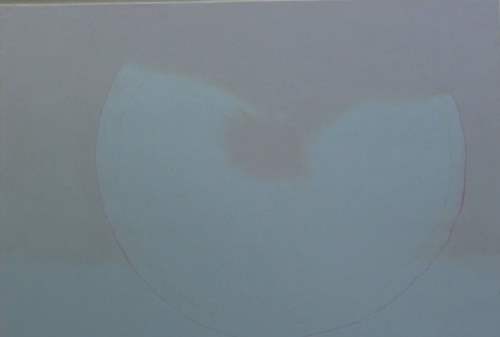
Start by blocking a pinky colour background wall. You can use a blue as well if you wanted to, as long as it is an off white colour.
Paint the top part of orange
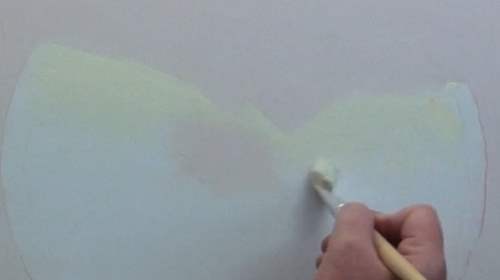
We’ll start at the top of the orange and work our way down. The top of the orange is very transparent, so start off with orange but a very light yellow. Then as you move downwards gradually first add more yellow to the mix, then more orange. As you can see none of these colours are bright or intense, we are painting the light transparent bits first.
Paint the underpainting of the orange

Now we need to start defining the cells of the orange. We do this by defining the outside edge of the cell as this is less transparent as the inside of the cell.
Paint darker orange colours
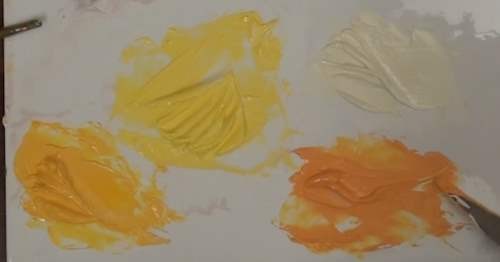
So use a darker orange than what you have painted into the background. But don’t go too dark too quickly you just want these edges to be two or three shades darker. Here at the top there are a few very see through areas so define them with white. Use the photo as your reference to spot the cell edges and the extra bright areas, and paint then in more or less. We don’t need to get it looking exact because every slice of orange will be unique.
Paint the middle of the orange slice
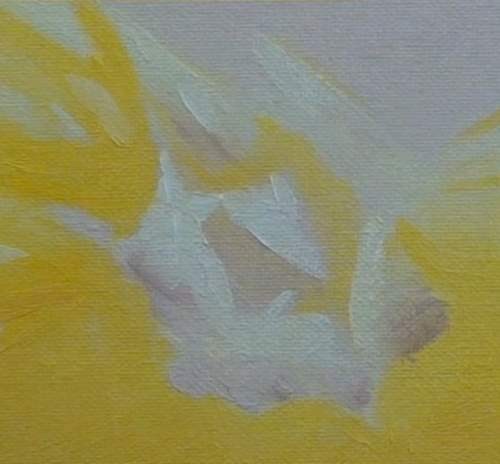
In the central part of the orange mix up a purple colour to use as the shadow for the white. Then fade it into the white, notice how these purples are on the outside and the white is on the inside. If you need to use your artist license to darken the patch of the wall that you can see in order to create a good contrast between the wall and the white of the orange. This contrast creates the illusion of distance between the orange and the wall. Do some lightening and darkening on the right hand side as well.
The rest of the slice becomes less transparent as we move down. This tells us that it is actually a wedge shaped slice. So less light passing through the thicker bottom area.
Darken the orange
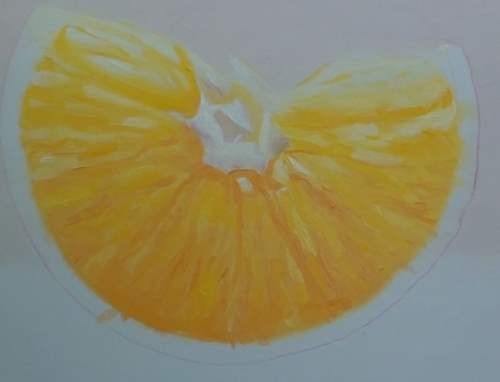
We will need to gradually build up this darkness. So start by spotting the darker lines caused by the edge of each segment and paint them in. Then find the edge of the cells inside the segment and paint that in. Then look for the lighter areas inside the cells and paint them in.
What I want you to notice is that I am working rough and fast. You can also see how much paint I have on the back each stroke. The idea behind working rough and quick like this is to ensure you create a random effect. And not a bunch of soldiers in a row. Also notice I have added quite a dark orange against the pith to ensure even more contrast to make the pith look bright and white.
Gradually keep building up the contrasts in the orange using brighter and brighter yellows and oranges
Paint the orange peel

To paint the orange peel, block in the outside edge using cadmium orange. Then mix yellow and white and block in the inside edge of the peel. Notice how I extend a triangle shape into the orange to show where two segments meet. Clean your brush and quickly blend them together.
Paint the texture of the orange
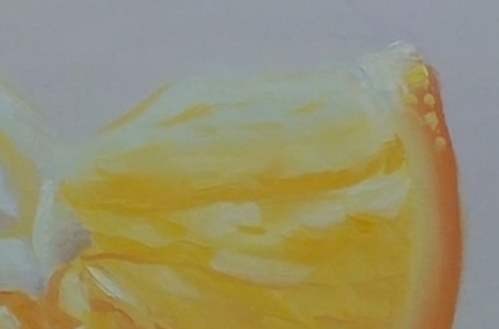
Add texture to the peel by adding a few white highlights and a few lighter and darker dots. For these dots I have used yellow plus white and raw umber for the darker dots. Notice how I soften these dots with my finger.
Paint the shadow on the table
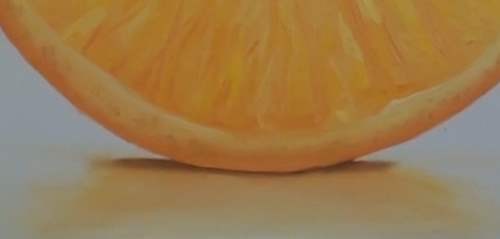
The orange is looking pretty awesome already, so lets add some pizzazz to the painting by painting a reflection on the table. In other words the table top is not only smooth and shiny, but of the yummy juice from the orange is also at the base of the orange. To point the reflection use the same orange as the peel and add a lighter minor image at the orange. This mirror must be bright orange at this base and fade lighter as it recedes away from the base.
Now lets add the shadow cast by the orange use raw umber, block in a line underneath the orange where it touches the table and quickly fade away to each side.
Paint the water drops
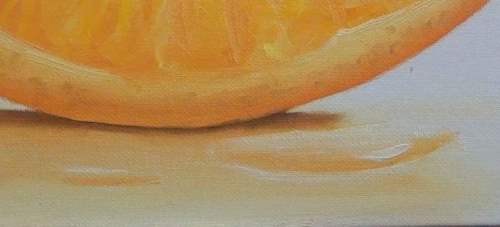
For the water drops paint flat ovals using white on one side and orange on the other. Finish each drop off with a white reflection dot to indicate the light source and with that our slice of orange looks like a million bucks.
Final painting

Click the button below to view the real time follow along version of this class:
Pin Me
